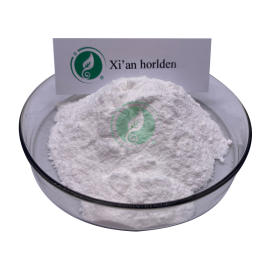-
Categories
-
Pharmaceutical Intermediates
-
Active Pharmaceutical Ingredients
-
Food Additives
- Industrial Coatings
- Agrochemicals
- Dyes and Pigments
- Surfactant
- Flavors and Fragrances
- Chemical Reagents
- Catalyst and Auxiliary
- Natural Products
- Inorganic Chemistry
-
Organic Chemistry
-
Biochemical Engineering
- Analytical Chemistry
- Cosmetic Ingredient
-
Pharmaceutical Intermediates
Promotion
ECHEMI Mall
Wholesale
Weekly Price
Exhibition
News
-
Trade Service
| How small bee mites affect the behavior of western bees |
Thermospermum meliii and Varroa dissidia reproduce in the same room.
Photo courtesy of the Institute of Bees, Chinese Academy of Agricultural Sciences
Photo courtesy of the Institute of Bees, Chinese Academy of Agricultural Sciences
The parasitic mites of May's heat mite significantly reduced the ability of flying homing and olfactory learning and memory of bees.
Photo courtesy of the Institute of Bees, Chinese Academy of Agricultural Sciences
Photo courtesy of the Institute of Bees, Chinese Academy of Agricultural Sciences
Recently, the bee pests and diseases innovation team of the Institute of Bee Research, Chinese Academy of Agricultural Sciences revealed the mechanism of the parasitic effect of a small bee mite, T.
mellifera, on the behavior of western bees
.
Relevant research results were published in the US " PLoS Pathogens " ( PLoS Pathogens )
PLoS Pathogens
Dai Pingli, the corresponding author of the paper and the researcher of the team, said that the parasitic of the big bee mites and the small bee mites are the most harmful to bee pests in the apiculture industry
.
Because the early small bee mites were only distributed in Asia, they did not attract people's attention like the big bee mites
However, compared with the big bee mites, the small bee mites have a smaller body size, a faster movement speed and a faster reproduction rate
.
By virtue of these characteristics, the parasite of the small wasp mites showed greater destructive power than the big mites
With the frequent transfer of commercial bee colonies, the globalization of the bee trade, the natural reproduction and migration of bees, and the gradual warming of the global climate, it may only be a matter of time before the small bee mites spread to regions outside of Asia and have a devastating impact on the beekeeping industry
.
Therefore, more and more researchers have begun to pay attention to the impact of small bee mites on western honeybees
According to Gao Jing, the first author of the paper and an assistant researcher at the Institute of Honeybees, their study found that the parasitism of the small bee mites significantly reduced the flying ability and homing ability of the western honeybees, and inhibited the olfactory learning and memory ability of the honeybees.
It was initially shown that it is involved in the immune system.
, Carbohydrate transport and metabolism, and changes in the expression of genes regulated by calcium/calmodulin-dependent kinase II (CaMK II ) activity
.
.
In addition, the observed learning and memory dysfunction is related to abnormal changes in the mushroom bodies of parasitic bees
.
This research provides a new theoretical basis for the in-depth understanding of the physiological and molecular characteristics of western honeybees in response to the parasitism of mites
This research was funded by the Innovation Project of the Chinese Academy of Agricultural Sciences, the National Natural Science Foundation of China and the National Bee Industry Technology System
.
(Source: China Science News Li Chen)
Related paper information: https://doi.
https://doi.
org/10.
1371/journal.
ppat.
1009684







